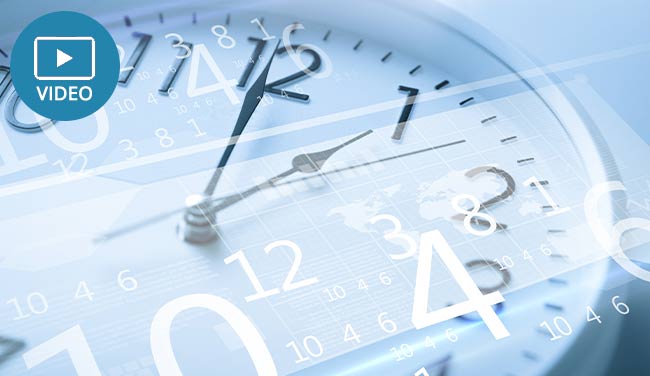22nd September 2025

Accurate forecasting depends on getting the details right. One detail that often gets overlooked is how average handling time (AHT) changes throughout the day.
It’s not just a single number, and using one average for an entire shift can lead to poor staffing decisions.
In this instalment of our video series on the key concepts behind accurate forecasting, Call Centre Helper’s Jonty Pearce explains how AHT varies across the day.
Watch the video below to hear Jonty explain what you need to know about forecasting – focusing on how AHT varies across the day:
Many planners assume a flat AHT across the day. In reality, it changes – often quite significantly, as Jonty explains:
“One of the things a lot of people miss when they’re doing staffing calculations, is they put in an average handling time for the day.
What you actually find is average handling time varies across the day, and across the shift. So, one of the things you’ll see, for instance, is that advisors are freshest at the beginning of the morning, and so they actually work faster, they get through phone calls quicker.
As the day goes on, what you’ll start to find is the average handling time goes up, and towards the end of the shift, that actually increases.
So, there is a difference in average handling time that you’ve got, so for the same number of calls you’ll probably need some extra people towards the end of the shift.”
Agents tend to be fresher and faster in the morning, moving through calls more quickly, but as the day progresses, fatigue can set in. This means that calls often take longer in the afternoon and towards the end of a shift.
This gradual increase in handling time means that more staff may be needed later in the day to handle the same number of calls.
Interestingly, there’s usually a drop in AHT during the final 30 minutes of a shift, which happens because agents are naturally more focused on wrapping up and getting home.
“There is one very interesting phenomenon that happens in the last half hour before the end of the shift: what you actually see is average handling time drops off.
The reason for that is human behaviour, as agents don’t want to hang around, and so what they do is they rush through calls at the end of a shift to get home. There is a very simple technique that can help that, and that is to take advisors off the phone before they end their shift.
So, if an agent’s shift was due to end at 8 o’clock, you don’t take them out of the queue at 8 o’clock.”
To avoid rushed interactions and protect customer experience, a simple solution is to take agents off the phones before their shift officially ends. For example, if a shift ends at 8:00pm, stop routing calls to that advisor from 7:30pm onwards.
The final 30 minutes can be used productively, as Jonty continues:
“What you do is you say after 7:30, you finish whatever that call is, for however long that takes, and then you spend the rest of the time doing some form of admin or training.
So, you can give the caller full attention, and you get admin or training time. Now you do have to manage that carefully – this isn’t holiday, this isn’t natter with your friends time.
This is actually admin or training time, so it’s important to monitor that. But if you do that, then you’ll keep customer satisfaction during the end of the shift”
Schedule admin tasks or training during this time. This helps agents focus fully on their final call without clock-watching, and you gain useful off-phone work time in return.
It’s important to be clear that this is not free time, and it should be structured and monitored like any other part of the shift.
Factoring in AHT variation across the day leads to more realistic staffing plans. It also helps avoid unnecessary pressure on agents and protects the quality of customer interactions.
By adjusting your models to reflect how people really work, your forecasts will be more accurate, and your contact centre will run more smoothly.
If you are looking for more great insights from Jonty about forecasting, check out these next:
Reviewed by: Robyn Coppell